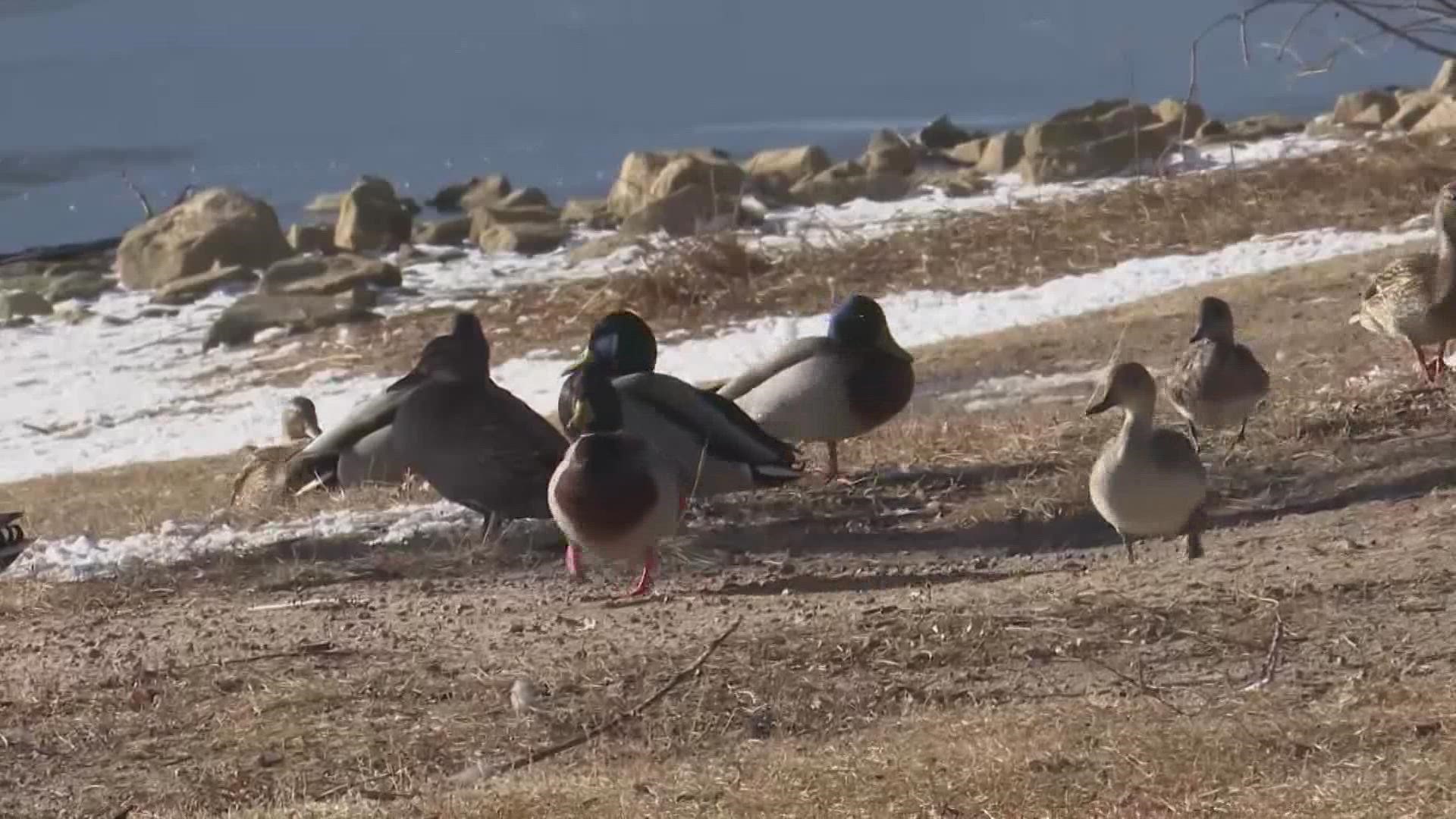DENVER — Avian flu was confirmed in nine mammals in Colorado last month, which was the most cases reported anywhere in the United States.
The nationwide outbreak of Highly Pathogenic Avian Influenza (HPAI) started last spring and primarily threatens wild and domestic birds. Mammals can become sick when they feed on birds that are infected with or have died from avian flu.
Since Feb. 8, avian flu has been confirmed in nine mammals in Colorado, according to the state agriculture department: four mountain lions, two red foxes, two bobcats and a black bear.
That's more confirmed cases in mammals last month than in every other U.S. state combined. Oregon confirmed two cases in skunks, North Carolina in a black bear and Kansas in a skunk, according to the U.S. Department of Agriculture.
Before last month, Colorado had confirmed HPAI in only one mammal: a skunk in Weld County in November.
"Ultimately, we don't know why we are seeing this many right now, but we do expect to see shifts in HPAI activity over time that might correspond with bird movements," Travis Duncan with Colorado Parks and Wildlife said.
He said CPW is keeping a close eye on the mammalian cases, but their biggest concern is for wild and domestic birds.
Since the outbreak began in Colorado, more than 6 million commercial chickens, 1,000 backyard poultry and 12,000 wild birds have been infected or slaughtered to limit the spread of the virus, according to the Colorado Department of Agriculture.
More than half of Colorado counties have confirmed HPAI cases. Seven counties have seen cases in birds and mammals. The most recent outbreak was confirmed Thursday in a backyard flock in Moffat County with 55 birds.
> The map below shows HPAI cases in Colorado. If you can't see the map, click here.
Every mammalian case in Colorado and when they were confirmed:
- Skunk in Weld County, Nov. 10
- Mountain lion in Gunnison County, Feb. 8
- Black bear in Huerfano County, Feb. 8
- Red fox in Alamosa County, Feb. 10
- Red fox in Pueblo County, Feb. 10
- Mountain lion in Boulder County, Feb. 10
- Mountain lion in Gunnison County, Feb. 10
- Bobcat in El Paso County, Feb. 14
- Mountain lion in Grand County, Feb. 23
- Bobcat in Jefferson County, Feb. 23
Officials say bird flu doesn’t represent a significant threat to human health. Human cases are extremely rare and none of the infected birds are allowed into the nation’s food supply. And properly cooking poultry to 165 degrees Fahrenheit will kill any viruses.
There has only been one human case of bird flu confirmed during this outbreak. That was a man who had been helping slaughter and remove infected birds from a Colorado farm. He recovered from the illness after a few days.
Nationwide, more than 58 million birds have been slaughtered on more than 300 commercial farms in 47 states. That is because any time the virus is detected, the entire flock on that farm — which can number in the millions — must be killed to limit the spread of the disease.
Only Hawaii, Louisiana and West Virginia have yet to report a case of bird flu.
The cost to the U.S. government is roughly $661 million. In addition to the cost of the government response that the USDA tallied up and rising prices for eggs, chicken and turkey, farmers who raise those animals have easily lost more than $1 billion, said an agricultural economist, though no one has calculated the total cost to the industry yet.
The Associated Press contributed to this report.
SUGGESTED VIDEOS: Animals and Wildlife

